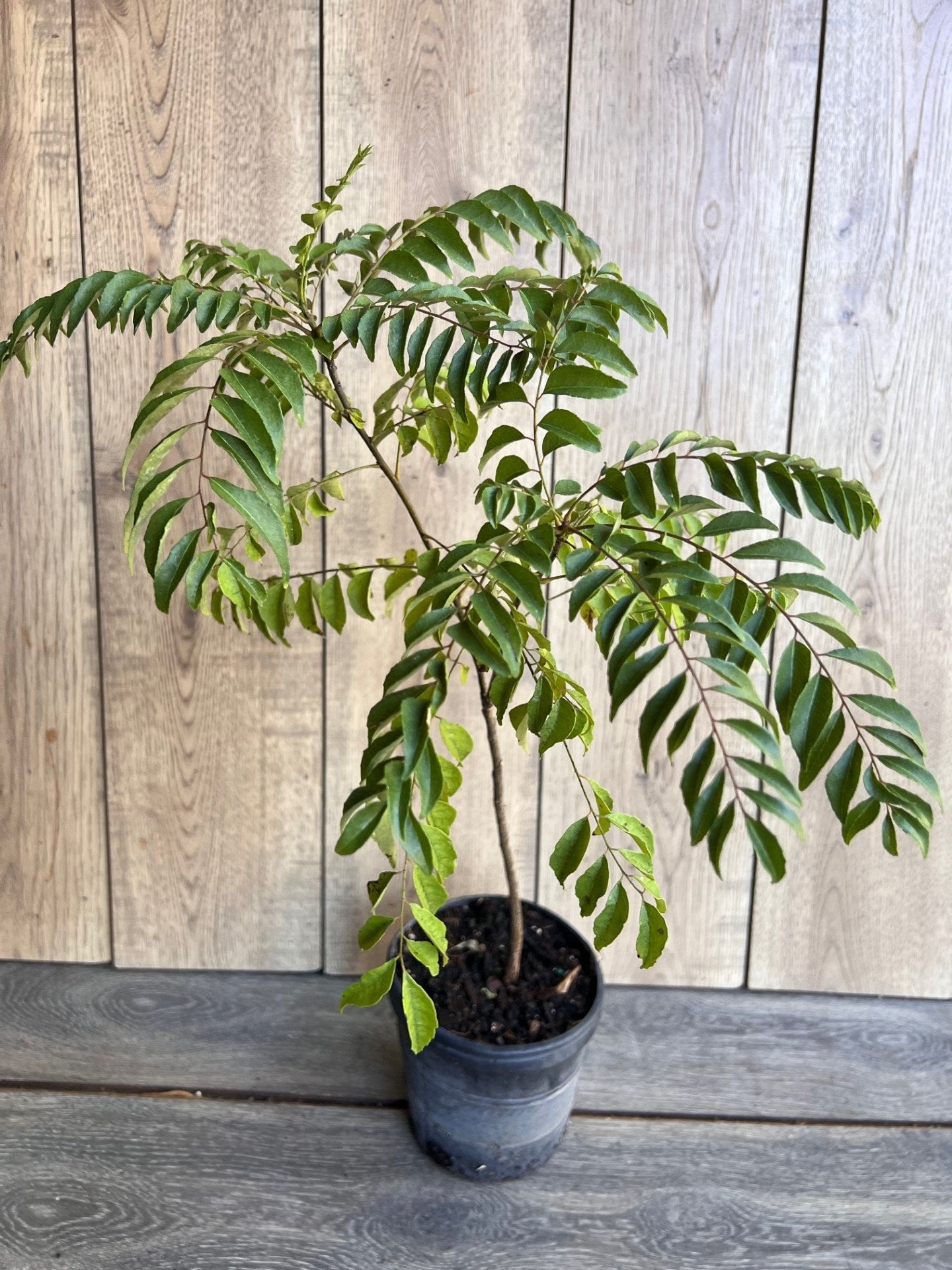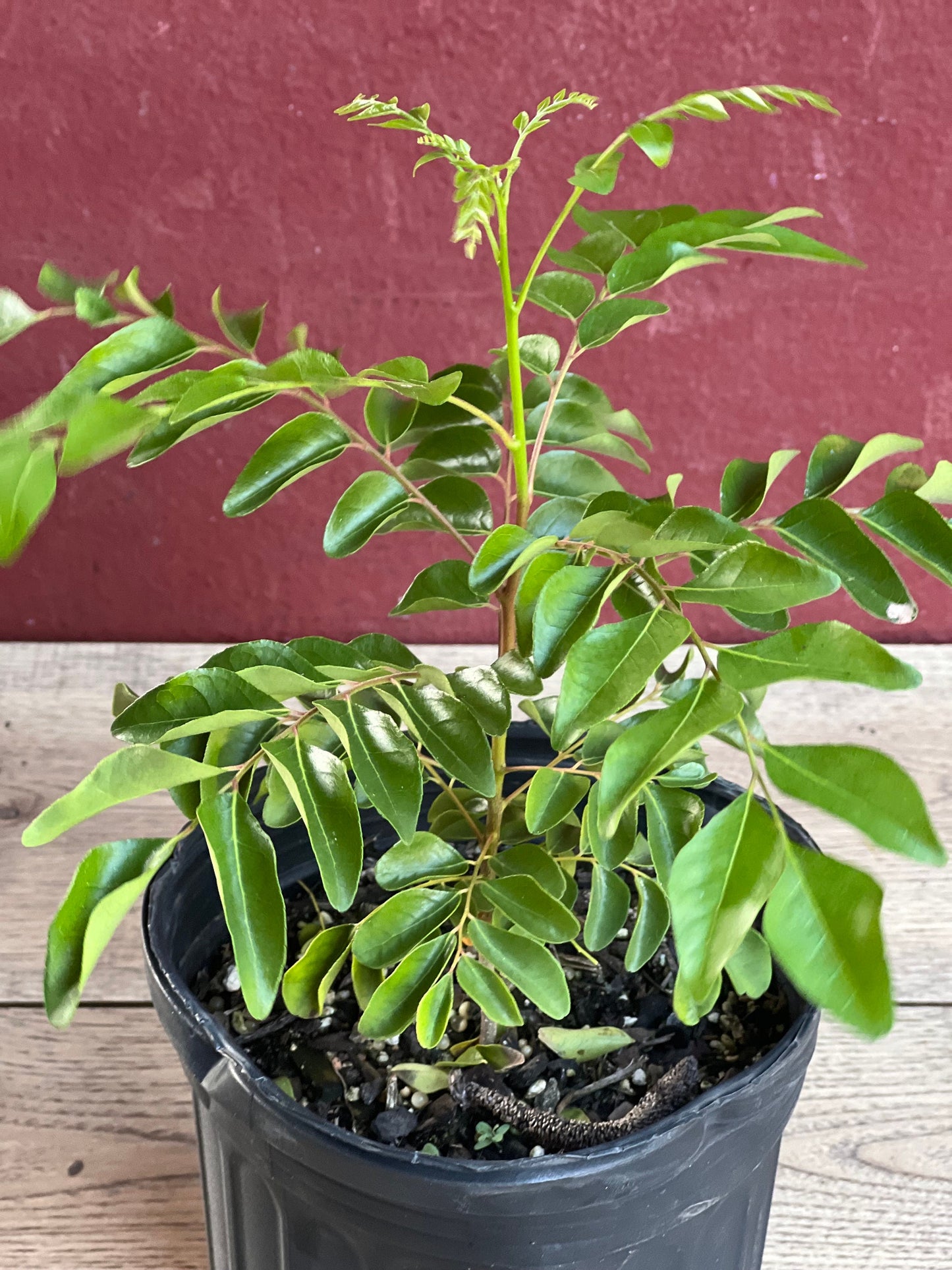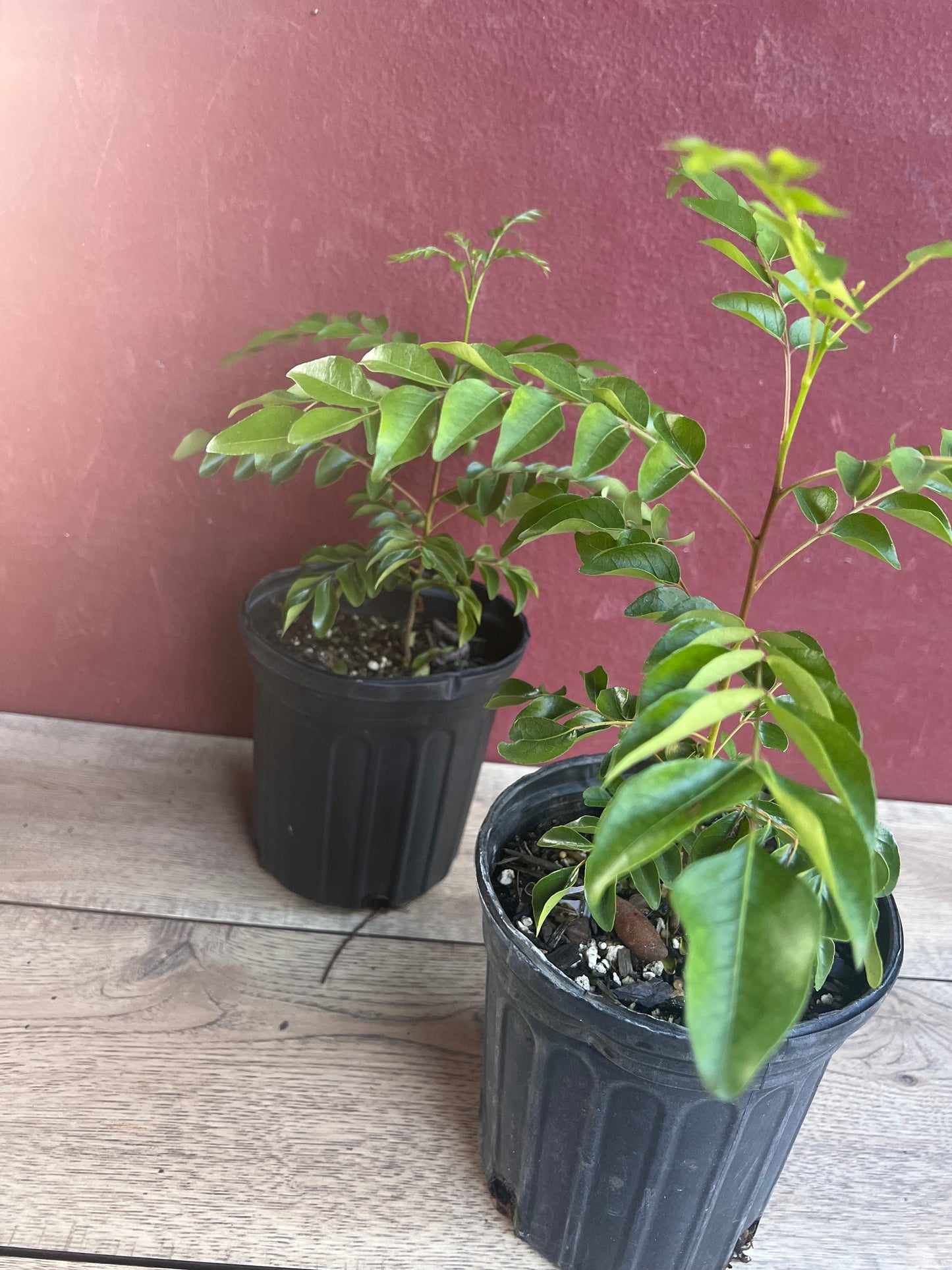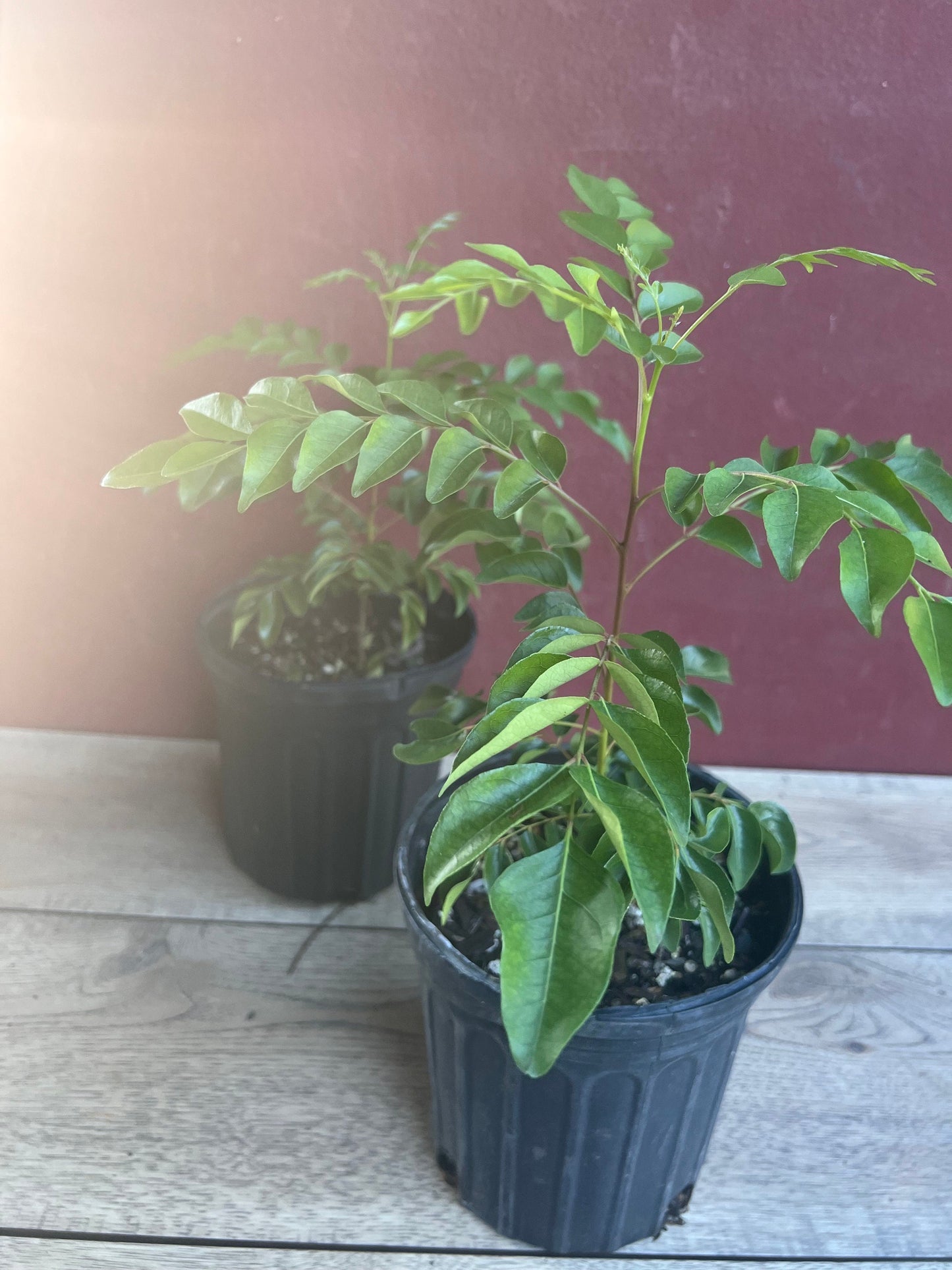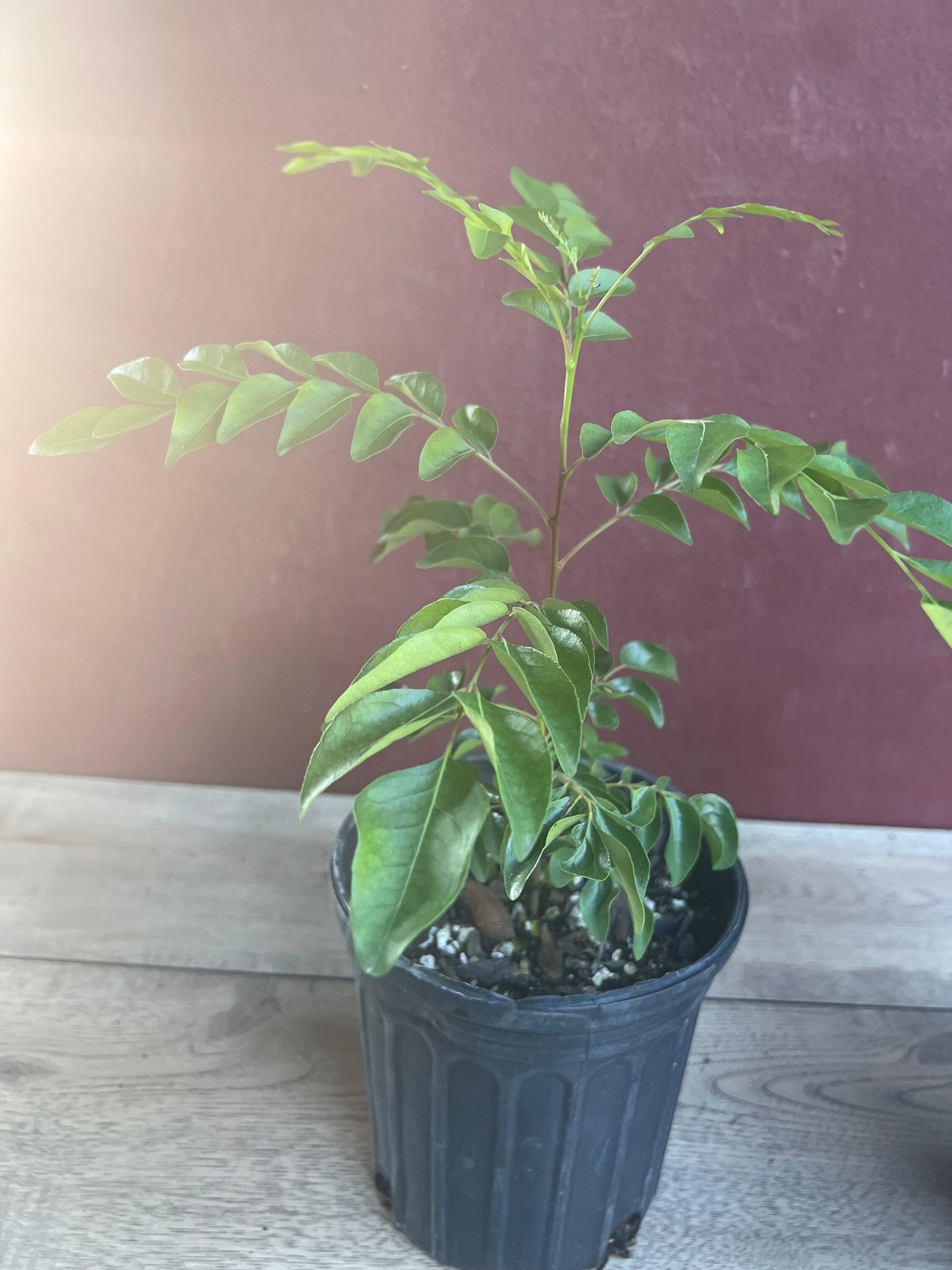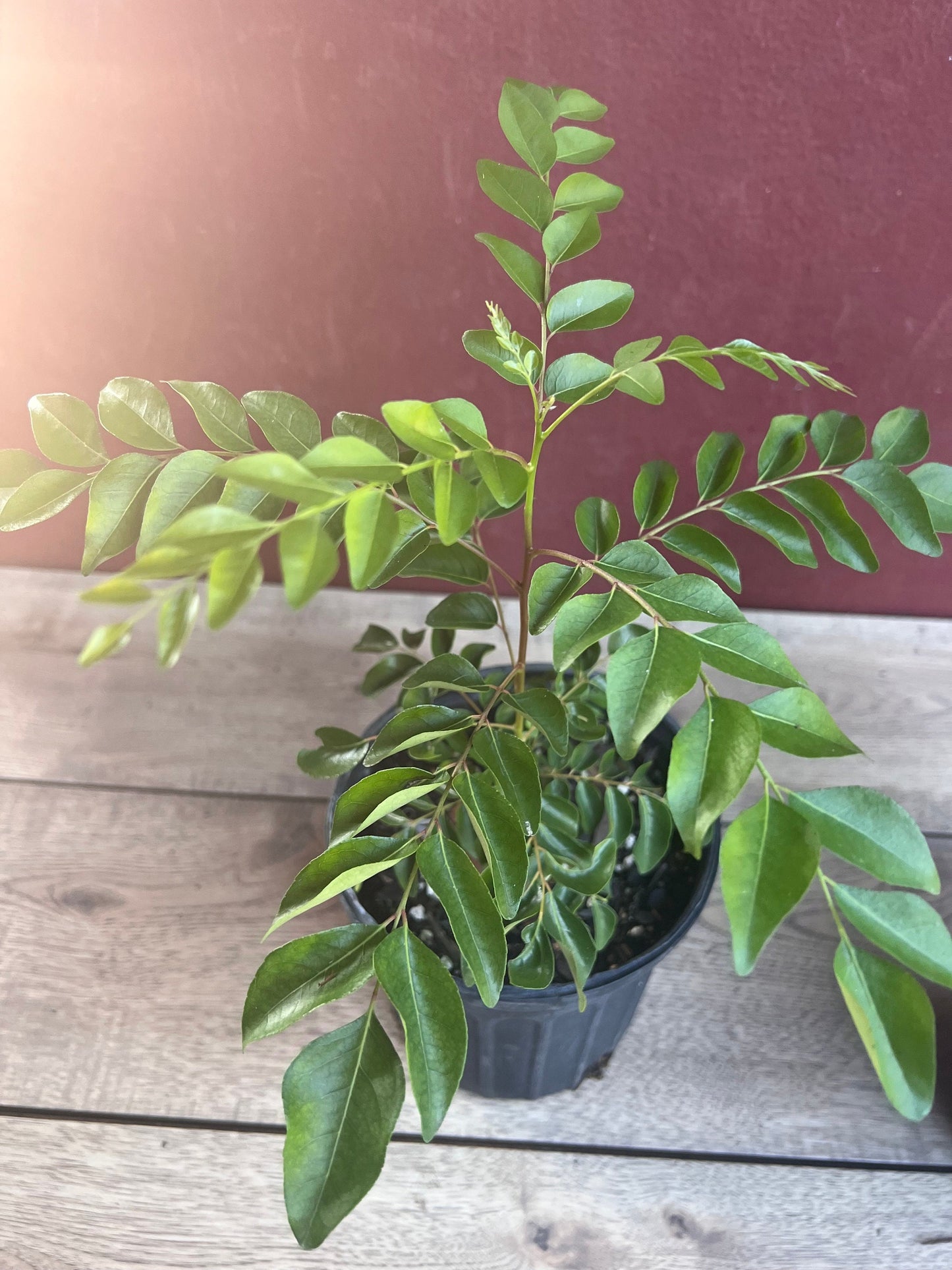Curry Leaf Plant, Murraya Koenigii, in 6" Pot. No ship to CA or HI
Curry Leaf Plant, Murraya Koenigii, in 6" Pot. No ship to CA or HI
Couldn't load pickup availability
Note: You will receive one Curry plant in 6" pot similar to the pictures
The Curry Plant (Murraya koenigii), also known as Curry Leaf Plant, is a fragrant, aromatic shrub native to India and Sri Lanka. It is prized for its flavorful leaves, which are commonly used in South Asian cooking, especially in Indian, Sri Lankan, and Thai cuisines. The plant has a unique, citrusy, and slightly bitter flavor that enhances the taste of curries, soups, and stews. Although the curry plant’s name suggests a connection to curry powder, it should not be confused with the spice blend; instead, it refers to the leaves of this plant, which are often called curry leaves.
Description:
- The curry plant is a small, evergreen shrub that grows up to 6-10 feet (1.8 to 3 meters) in height when fully mature.
- Its leaves are pinnate (feather-like) and grow in clusters along the stem, with each leaf being lance-shaped and dark green.
- The plant produces small, white, aromatic flowers, which are followed by small, black berries, though it's the leaves that are most commonly harvested for culinary use.
Care Tips for Curry Plant:
-
Light Requirements:
- Full Sun: Curry plants thrive in full sunlight and need at least 6 hours of direct sunlight daily. This ensures robust growth and encourages the production of flavorful leaves.
-
Watering:
- Moderate Watering: The curry plant prefers moderate watering, but like many herbs, it doesn’t like to be waterlogged. Water the plant when the soil feels dry to the touch, but ensure that the pot or ground has proper drainage. Avoid letting the plant sit in standing water to prevent root rot.
-
Temperature:
- Warm Temperatures: The curry plant thrives in warm temperatures, typically between 75°F to 95°F (24°C to 35°C). It is sensitive to cold and frost, so it is best grown in regions with mild winters or as a container plant that can be brought indoors during the colder months.
-
Soil:
- Well-Draining Soil: The plant prefers light, well-draining soil. A loamy or sandy soil mix is ideal, and it should be kept slightly moist but not wet. It does not tolerate heavy, clayey soil that retains water for too long.
-
Pruning and Harvesting:
- Pruning: Regular pruning helps keep the curry plant bushy and encourages more leaf production. Trim any leggy growth and remove dead or damaged branches. Harvest the leaves regularly by snipping off fresh sprigs; this will encourage the plant to grow new leaves. Curry leaves can be used fresh or dried for cooking.
-
Pests:
- Common Pests: The curry plant is relatively pest-resistant, but it can occasionally attract aphids or spider mites, especially when grown indoors. Regular inspection and the use of insecticidal soap or neem oil can help control any pest infestations.
-
Fertilizing:
- Occasional Feeding: Curry plants are not heavy feeders, but you can apply a balanced fertilizer during the growing season (spring to summer) to encourage healthy growth. Avoid over-fertilizing, as this can lead to excessive leafy growth without enough flavor in the leaves.
-
Repotting:
- If growing the curry plant in a container, repot it every couple of years to ensure it has enough room for healthy root growth. Choose a pot that is only slightly larger than the current one to avoid overwatering.
Share
